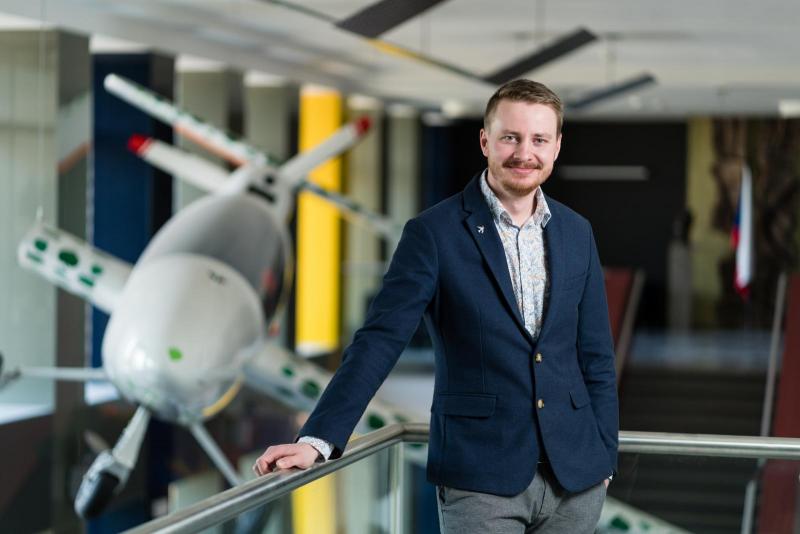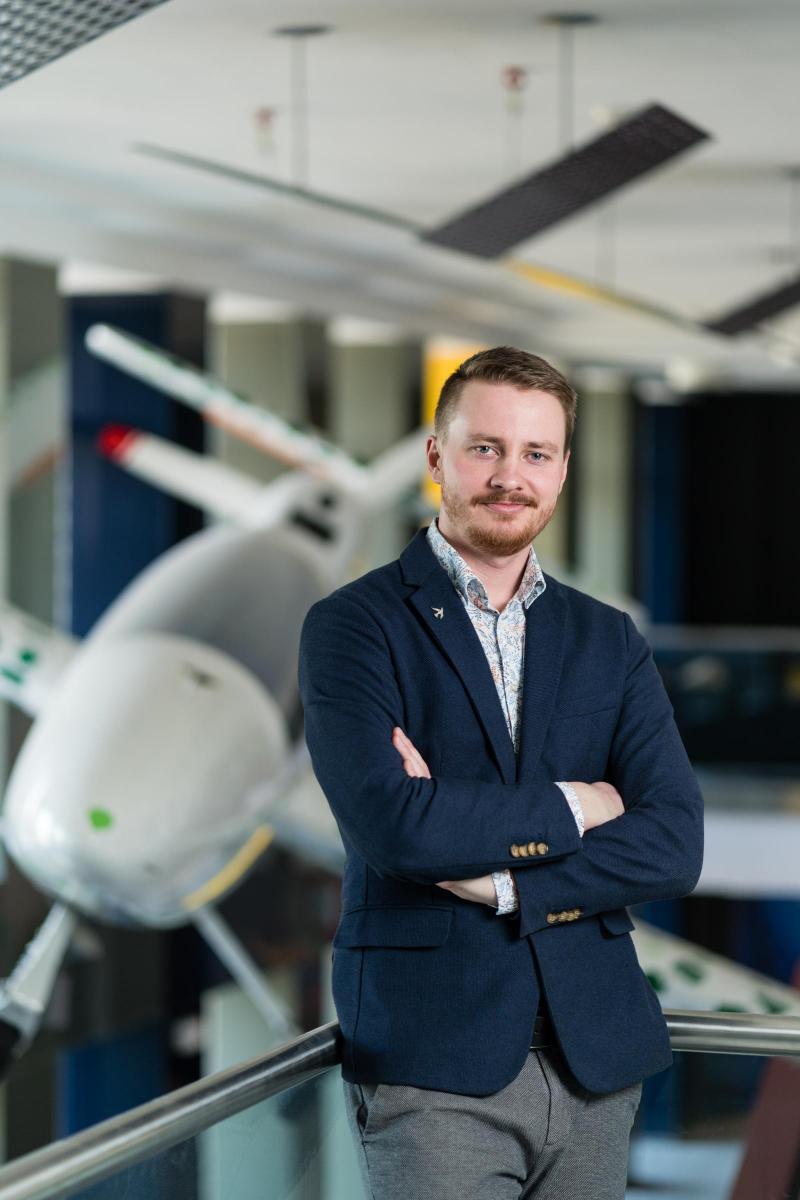Topic
For cleaner and "greener sky"

Delft University of Technology, Vienna University of Technology and London's Imperial College. Three prestigious foreign universities are partners in the project, which was managed by the Faculty of Mechanical Engineering. The goal of the BAANG project is to increase the scientific excellence of the Brno University of Technology through cooperation on research in the field of so-called smart aviation, which is intended to make air transport more efficient and thereby save costs and the environment.
Aviation is one of the main economic and social engines of global development. The world's airlines transport billions of passengers every year, air transport is a key part of international trade. Despite these indisputable benefits, the industry also faces a number of problems, including negative impacts on the environment, especially the share of carbon dioxide emissions into the atmosphere. Nature is so far smarter than man. Birds can naturally work with aerodynamics and change the shape of their wings during their flight. Another inspiration is their skeleton, thanks to which they have a light body and can fly efficiently.
The researchers want to use both for the aircraft wings, which will be the focus of the joint research. "The aim is to innovate the design of the wing so that it is lighter and makes better use of aerodynamics. If it is possible to reduce the aerodynamic resistance of the wing and the weight of the structure, there will be a reduction in fuel consumption, and therefore also a reduction in costs and greenhouse gas emissions," the researcher Jan Navrátil from the FME Aviation Institute explains. In addition to international cooperation, cooperation across disciplines is also expected. Experts in aviation, mechatronics, mechanics of materials and additive technologies will be involved in the research. Scientists also plan to use intelligent materials. Six doctoral students and three assistants will get the chance to start their scientific career with a six-month internship at one of the aforementioned prestigious universities.
One of them is a doctoral student Ondřej Červinek, who works on computational modelling of loaded metamaterials. "We can imagine an ordinary material as a more or less consistent mass of one or more substances, which is relatively homogeneous inside and has certain properties. On the other hand, in our concept, metamaterial is characterized by its internal architecture consisting of a number of sometimes regular formations that form a more complex structure. As a rule, it does not even consist of only one type of material, but contains several different combinations," Červinek explains.
In this case too, researchers turn to nature for inspiration. "Plants and animals often have all kinds of hollow, porous and regularly arranged formations in their bodies, sometimes even structures that give them better properties. This interests us as well: we want to achieve improvements, for example, in the form of greater load-bearing capacity of the metamaterial while reducing its weight," explains Červinek. In nature, we could imagine, for example, the structure of butterfly wings as a metamaterial, or in an ordinary household, for example, a dish sponge. The greater use of metamaterials in industry is supported by 3D printing, with the help of which it is possible to produce such complex structures. "But at the same time, the question of how to design these complex structures arises. If you wanted to go, for example, to find the filling of a part by trial and error, you have an almost infinite number of options. In contrast, an experiment would be a very expensive and lengthy way. The optimal solution is therefore to use calculations and simulations. But the problem is that conventional design methods fail here, and therefore new ones need to be developed," Červinek says. This will be one of his tasks within the BAANG project.

Ondřej Červinek will now spend three months working on computational modelling, specifically on superelasticity. "In the context of our project, which is to be the final application of an airplane wing, this is a property that allows flexible bending and controlled morphing of wing parts without breaking the material itself of individual parts. The controlled modification of the part of the wing, which is called exhaust feed, should significantly increase the efficiency of the flight in various modes, including during take-off or landing," Červinek explains. In the summer, he will return to VUT to experimentally test his simulations, and then he will go to Vienna again for the next three months. Similarly, other young scientists from the Faculty of Mechanical Engineering also went abroad for experience.
Within the BAANG project, science is only part of its content. An equally important item is the establishment of foreign contacts, and especially the opportunity to learn from the best. "TU Delft is one of the few institutions in the world that deals with all environmental aspects of aviation. London Imperial College is ranked among the ten best universities in the world, TU Wien is among the first two universities. For comparison: our University of Technology is moving between the 700th and the 750th rank. We believe that we can learn a lot from our colleagues," Michal Kotoul from the Institute of Mechanical Bodies, Mechatronics and Biomechanics, who is in charge of the entire project, says. The BAANG project will last three years and is financed by the European Union within the Horizon Europe programme. A total of 388 projects were submitted in this challenge.
38 projects competed for the Czech Republic, nine projects were selected for financing. At BUT, this is the second successful Twinning project. Ondřej Červinek is already looking forward to his next trip abroad. "I would like to move professionally, but I also hope that we will deepen our mutual ties so that we can continue our cooperation in other projects," he says. What would you consider a success? "There are many formal criteria that we must fulfil. I would also be happy with the completely informal aspect, i.e. if we managed to put together something useful that promises to be used in the future. It's great when you achieve a result that serves people, and you can say: we have a lot of good work behind us," Červinek concludes.
From oil refineries to charity. FME graduate found his life mission in helping others
Nature-inspired morphing wing utilises properties of metamaterials
Hybrid pallets save nature. Experts from FME BUT are also helping with the development of Flexipal
Device is being developed at strojLAB that students hope will help them succeed in a prestigious biotechnology competition
Waste is science. Thanks to experts from BUT, the Czech Republic has a forecast of their production